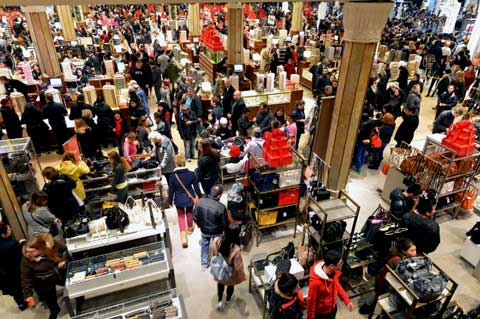Online spending hit record levels on Black Friday, while robust sales at brick-and-mortar retailers indicated the shopping bonanza’s traditional side is not dead yet.
US e-commerce sales jumped 17% to $5.03 billion on Friday, according to Adobe Digital Insights, a data analytics provider. Black Friday, which follows the Thanksgiving holiday, is one of the most important shopping days of the year as US consumers make use of retailers’ deep discounts to begin buying for the holiday season.
While the growth of online shopping has resulted in Black Friday sales shifting from physical retail to the web in recent years, visits to brick-and-mortar shops declined by less than 1% for this year’s event, according to ShopperTrak.

“There has been a significant amount of debate surrounding the shifting importance of brick-and-mortar retail, and the fact that shopper visits remained intact on Black Friday illustrates that physical retail is still highly relevant and, when done right, profitable,” said Brian Field, senior director of advisory services for ShopperTrak.
Seeking Alpha, a news service which tracks stock performances, noted a strong Black Friday for US retailers including Amazon, Walmart and J.C. Penney. However, Macy’s suffered from a malfunction of its credit-card payment systems that resulted in frustration among shoppers, CNBC reported.
The big winner, though, was Amazon, which took about 45% to 50% of Friday’s combined online sales, according to estimates by research group GBH Insights cited by Business Insider. A jump of more than 2% in the e-commerce giant’s share price on Friday resulted in founder Jeff Bezos’s total wealth rising by $2.4 billion to $100.3 billion, Bloomberg reported.
Online retailers are now looking toward Cyber Monday, which was traditionally the busiest day of the year for e-commerce sales.








